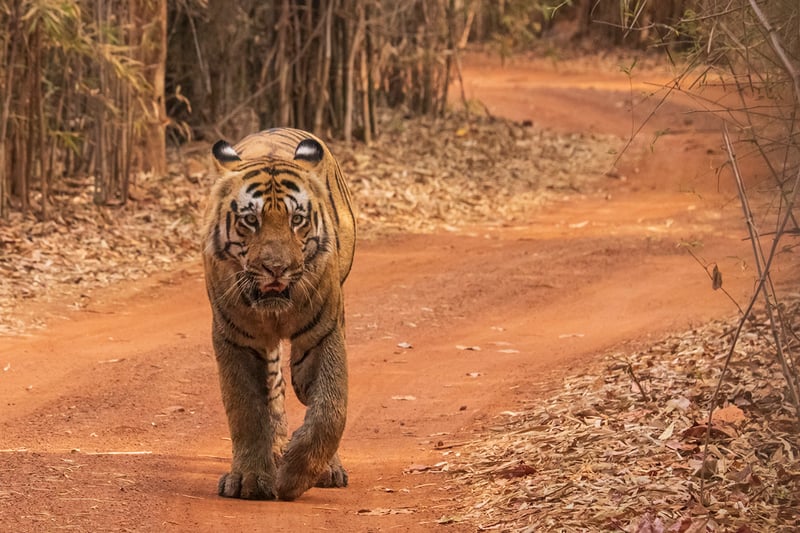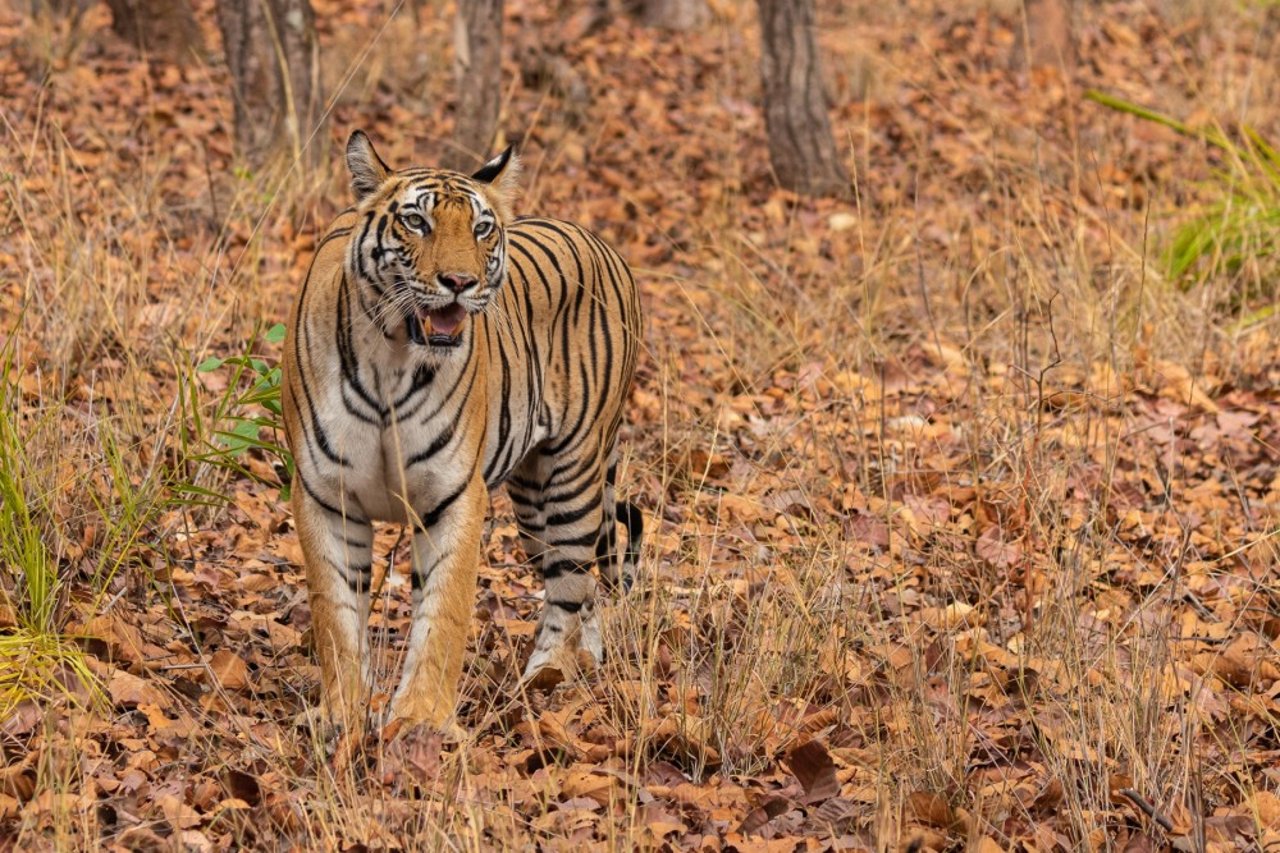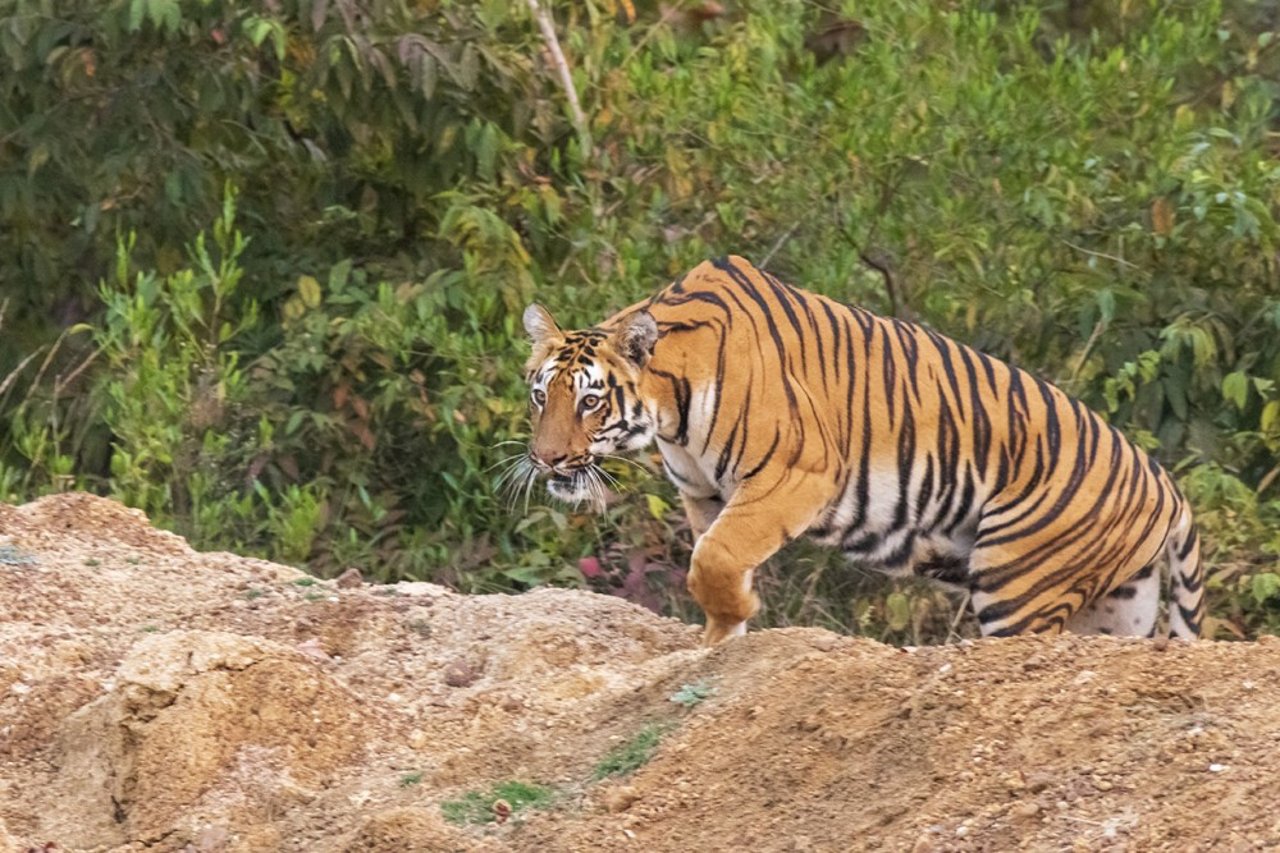
Tigers are a symbol of our national pride. Ironically, the tiger’s royal status has turned into a curse threatening their own existence, since black marketeers perceive tigers as trophy assets.
The Symbol of Our National Pride
Tigers are a symbol of our national pride. The majestic cats represent magnificence, power, and fierceness, and have always been an integral part of Indian culture. In fact, the tiger also holds mythological significance since it is considered the mount for Goddess Durga. It is believed more than 58,000 tigers roamed the lush sacred forests of India two hundred years ago. At that time, these tigers were oblivious of the pain and despair that lied ahead. As the act of poaching gained dominance, the peaceful habitat that tigers enjoyed in utopian forests started to wane. Why would any morally upright human engage in slaughtering tigers? It all comes down to status, demand, and money. Ironically, the tiger’s royal status has turned into a curse threatening their own existence, since black marketeers perceive tigers as trophy assets. The demand for tiger skin and bone to make wine, pelts, and traditional medicine sneakily started to soar, causing the death of more tigers. Tigers were no longer India’s national symbol but became objects which were smuggled and annihilated for money. The Indian tiger population dropped to just ~2,000 tigers (2014) due to increased poaching, man-animal conflict, and land degradation, limiting the area for tigers. Fortunately, among the dark clouds that hovered over India's forests, we have finally found a silver lining.
Image Credit: Tiger in Bandhavgarh by Krishnendu Mukherjee
The statistics bring a glimmer of hope...
Prime Minister Narendra Modi released a recent census, stated that India's tiger population has increased from 2,226 in 2014 to 2,967 in 2018, which is a 33% increase[1]. The most significant increases in tiger population have been in Madhya Pradesh (71%), Maharashtra (64%) and Karnataka (29%)[2]. It is estimated that India now inhabits 70% of the tigers globally. PM Modi recently stated, “Nine years ago it was decided in St. Petersburg that the target of doubling the tiger population would be 2022. We in India completed the target four years earlier," as he referred to the WWF program[3]. These statistics indicate that India’s tiger conservation program has been a roaring success due to various efforts by the government and conservationists.
Firstly, the Forest Department has significantly improved the conservational efforts and habitat reserves for tigers. The reserves for large groups of tigers have increased from 28 to 50 in the last 12 years. The development of these habitats strengthens the core area populations, enabling tigers to migrate and inhabit other areas. Secondly, India built the world’s largest animal underpass beneath highways; this has aided the migration of tigers and reduced their conflict with humans. Thirdly, environmental degradation is a crucial issue since tigers who are constrained for space end up coming into villages, resulting in man-animal conflict. As a solution, efforts have been made to rehabilitate villages outside of the core and protected areas for tigers. Finally, the tiger population has also increased due to the elimination of organized poaching and the increase of tiger births. It is safe to say that India has strived to protect tigers and that our dream of our national animals roaming lush forests is slowly coming back.
But all that glitters is not gold…
However, despite the recent increase in India's tiger population, the roar of tigers remains unevenly spread across the country. This distribution leads to several challenges. According to an estimate, big cats live in around 10% of India’s potential tiger habitat (30,0000 square kilometers)[1]. Anup Kumar Nayak, the chief of National Tiger Conservation Authority, elaborates why there is uneven distribution, “We have 50 tiger reserves. Not all are doing well. There is a lack of protection and management in some areas.” For instance, the count of tigers has decreased from 46 to 19 in Chhattisgarh, and Odisha now only has 28 tigers[2]. Since the distribution of tigers is uneven, forests with higher tiger density often have tigers venturing outside the forest perimeter in search of food, resulting in conflict between animals and infrastructure. An analysis released by PM Modi, the Management Effectiveness Evaluation of Tiger Reserves 2018, reveals that at least half of Indian’s tiger reserves face threats from busy roads, barriers, railway lines, and traffic. In addition to infrastructure, man-animal conflict is another threat caused by an uneven spread of tigers across India. Many tiger reserves rely on tourism for economic growth, and in case a tiger leaves a park due to high density and minimum space, man-animal conflict will most likely occur.
Another big concern is the treatment of tigers as commodities that we trade, sell, and exploit. Until these practices are entirely curtailed, tigers, both live and dead, will be in demand, and supply via illegal methods will continue. Other risks for tigers include poaching, mining, climate change, and lack of adequate space. We must urgently tackle all these impediments to ensure a safe and healthy environment for tigers that is sustainable.
Image Credit: Tiger in Tadoba Tiger Reserve by Krishnendu Mukherjee
Our resolve for the future...
We can agree that determined efforts by the government and conservationists have clearly led to an improvement in the tiger population in India. However, it is now time to overcome the remaining challenges, and it is time to restore the historical significance and status of a tiger. In Sept 2019, PM Modi referring to the elimination of illegal poaching, stated, “On Global [International] Tiger Day, we reaffirm our commitment to conserve tiger population in the country. We are doing whatever we can to save and conserve the majestic animal.[1]”
Let’s use International Tiger Day not only to celebrate our national animal but also to take an oath to protect it.
Tigers are not objects we can trade, sell, and use for money and status. They deserve a healthy life in protected natural habitats. That is why we are asking the Prime Minister of India to support the call for a global ban on wildlife trade at the G20 summit. You can be a part of this change too. Sign this petition and ask Shri Narendra Modi to support the call for a global wildlife trade ban.
Watch the Video to know why there is a need to END WILDLIFE TRADE
Sources:
About the Volunteer: Nikita Dhawan is a tenth-grade student at the American Embassy School, New Delhi, and an intern at the World Animal Protection, India. She believes that the Earth is as much a home to animals as it is to human beings, and hence they deserve our respect and protection. She stands against all forms of animal captivity and their use for human entertainment. Outside of school, she enjoys writing, photography, and playing the piano.

